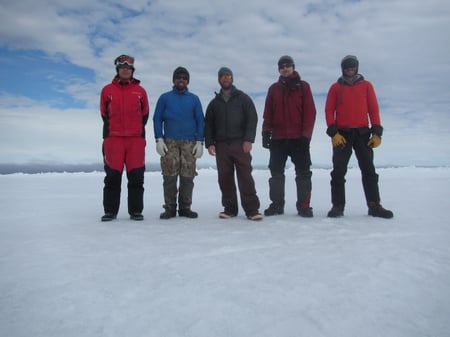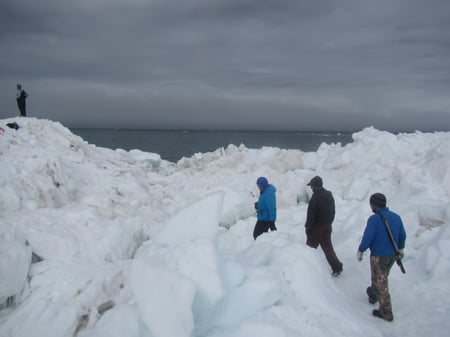From May 18th to June 1st, I visited Alaska through the support from the ArCS Program for Overseas Visits by Young Researchers. The aim of this study is to reveal the process of material cycle associated with sea ice growth and decay and its relationship to marine ecosystem. Sea ice stores abundant nutrients. Sea ice likely supplies nutrients in the ocean during spring or summer melting season, and this has potential impact on the marine ecosystem through biological processes such as phytoplankton bloom.
However, the relationship between materials released from melting sea ice and marine bio-productivity has not been well understood. In addition, we still have many questions about materials inside sea ice, as well. Although the origins are considered to be ocean bottom sediment, the process of sediment entrainment into sea ice has not been clearly established. I would like to contribute in addressing these questions. For the former half period of this program, I conducted sea ice observation around Utqiaġvik located at the northernmost part of Alaska. Around the Chukchi Sea and Elson Lagoon, stable land fast ice is formed during winter through spring. Fast ice records its growth history as micro structure. Thus, we can estimate the entrainment process of inclusions in sea ice through the analysis of sea ice structure and distribution of the inclusions within the ice. For this reason, I planned to obtain and analyze fast ice cores. This observation was carried out as part of the international collaboration with University of Alaska Fairbanks (UAF). We reached the observational points on fast ice with a snow machine. Presence of polar nature on the ice such as gigantic pressure ridge or polar bear gave me unforgettable experiences. For this observation, I obtained sea ice core from five sites and also measured ice temperature and salinity profiles. Additional ice characteristics will be analyzed in Japan. Obtained ice cores contain sediment layers and I am excited to analyze these samples. After the field work, I moved to UAF to analyze the sea ice observational data. For example, we can estimate when and how fast ice around Utqiaġvik was formed through sea ice radar data operated by UAF. In the Chukchi Sea off Utqiaġvik, year-long oceanic and sea ice data were collected by underwater instruments (mooring observation). From these information, we can infer the relationship between sea ice growth/decay and phytoplankton bloom through the combination of the sea ice radar and mooring observations. I found good preliminary results from exploratory phase of data analysis. I will investigate those details and combine the sea ice core analysis to reveal the role of sea ice in material cycle and ecosystem in the polar ocean.
Ito Masato(Hokkaido University)






